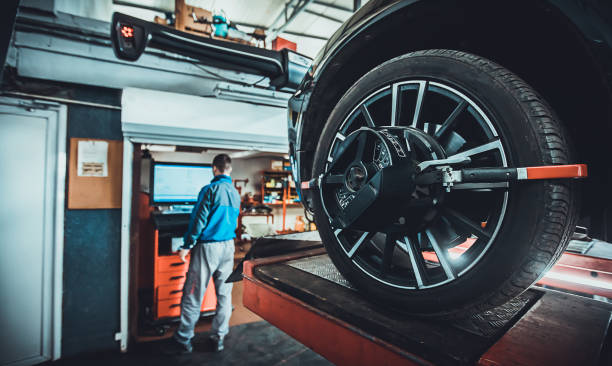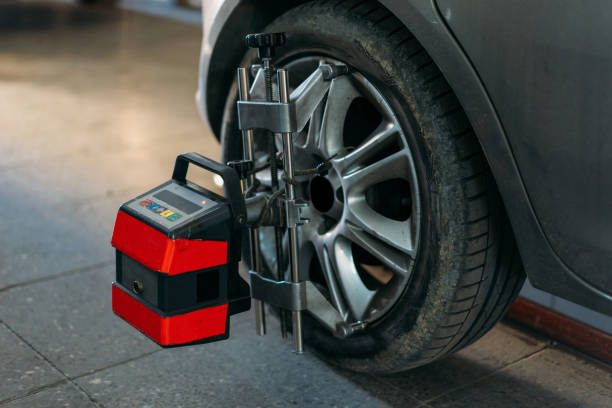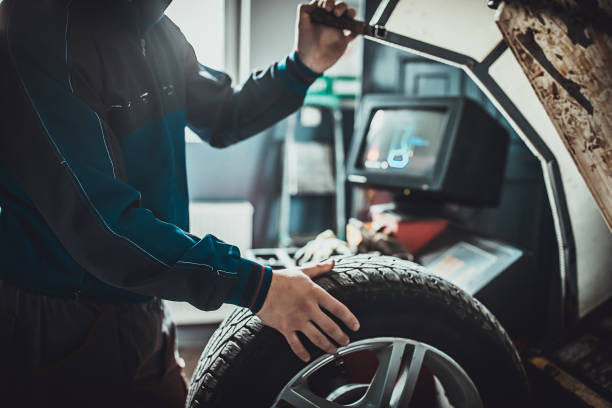Proper tire alignment is key to optimal vehicle performance. Misaligned tires can lead to uneven wear, poor handling, and decreased fuel efficiency.
Understanding how tire alignment affects your vehicle is crucial. It not only impacts the longevity of your tires but also your driving experience. Well-aligned tires ensure smooth handling, better fuel consumption, and overall safety. Misalignment, on the other hand, can cause your vehicle to drift or pull to one side, making driving challenging and uncomfortable.
Regular alignment checks can save you money on tire replacements and repairs. This blog post delves into the importance of tire alignment, its effects on performance, and why regular maintenance is essential for a safe and efficient driving experience. Stay tuned to learn more about keeping your tires aligned for a smoother ride.
Importance Of Tire Alignment
Proper tire alignment ensures even tire wear and improves vehicle handling. Misalignment can lead to poor fuel efficiency and increased tire wear. Regular checks maintain optimal performance and safety.
Tire alignment is crucial for your vehicle’s performance and safety. Proper alignment ensures your car drives straight and true. Misalignment can lead to many problems. It affects safety, tire life, and overall driving comfort. Understanding these impacts helps maintain your vehicle better.
Safety Factors
Proper tire alignment keeps your car stable on the road. Misaligned tires can cause your car to pull to one side. This makes steering difficult and less predictable. In emergencies, quick maneuvers become risky. Correct alignment helps avoid accidents. It ensures your tires grip the road well. Better grip means better braking and handling.
Longevity Of Tires
Aligned tires wear evenly. Uneven wear shortens tire life. Misalignment causes faster wear on certain parts of the tire. This means you will need to replace your tires more often. Proper alignment saves you money. It also ensures a smoother and more comfortable ride. Regular alignment checks help maintain tire health. Your tires will last longer with proper care.
Components Of Tire Alignment
Tire alignment plays a crucial role in vehicle performance. Understanding the components of tire alignment helps maintain optimal handling and tire longevity. Let’s explore the main components: camber, toe, and caster.
Camber
Camber refers to the angle of the tire when viewed from the front. Positive camber means the top of the tire leans out. Negative camber means it leans in. Proper camber ensures even tire wear. It also improves stability during turns. Incorrect camber angles lead to uneven wear and poor handling.
Toe
Toe describes the direction the tires point in relation to the vehicle’s centerline. “Toe-in” means the front edges of the tires point inward. “Toe-out” means they point outward. Correct toe settings ensure even tire wear and straight-line stability. Incorrect toe angles cause tires to scrub against the road. This leads to rapid wear and poor fuel efficiency.
Caster
Caster is the angle of the steering axis when viewed from the side. Positive caster tilts the top of the steering axis toward the driver. Negative caster tilts it away. Proper caster settings improve steering stability and cornering performance. Incorrect caster angles lead to difficulty in steering and poor vehicle control.

Signs Of Misalignment
Recognizing the signs of tire misalignment can save you trouble and expenses. Proper alignment ensures your vehicle runs smoothly and safely. Ignoring these signs can lead to bigger problems. Here are some common indicators of misalignment.
Uneven Tire Wear
Uneven tire wear is a clear sign of misalignment. Check your tire tread regularly. You may notice one side wearing faster than the other. This uneven wear reduces tire life. It also compromises your vehicle’s grip on the road.
Vehicle Pulling
Does your vehicle pull to one side? This is another sign of misalignment. Your car should drive straight when on a level road. If it drifts left or right, it’s time for an alignment check. This pulling can make driving tiring and unsafe.
Steering Wheel Vibration
Feeling vibrations in your steering wheel? Misalignment might be the cause. These vibrations are more noticeable at higher speeds. They indicate that your wheels are not aligned correctly. This can affect your control over the vehicle.
Impact On Fuel Efficiency
Tire alignment plays a crucial role in your vehicle’s performance. One significant aspect is its impact on fuel efficiency. Proper alignment ensures that your tires meet the road correctly. Misalignment can cause uneven wear and other issues. These problems can affect how your car uses fuel.
Increased Rolling Resistance
Misaligned tires create higher rolling resistance. This means your car needs more energy to move forward. More energy means the engine works harder. This increased effort leads to more fuel consumption.
Fuel Consumption
When your tires are not aligned, they do not roll smoothly. This can cause drag, making the engine burn more fuel. Proper tire alignment ensures efficient fuel usage. It reduces the strain on the engine, saving you money on gas.
Effects On Handling And Stability
Tire alignment is crucial for a vehicle’s overall performance. Proper alignment ensures that your tires meet the road at the right angle. This alignment affects handling and stability, which are key for a safe and smooth ride.
Responsive Steering
Correct tire alignment impacts steering response. When tires are aligned properly, the steering wheel responds accurately to your inputs. This makes the car easier to control. Misalignment, on the other hand, can cause the steering wheel to pull to one side. This makes driving more difficult and tiring.
Cornering Performance
Proper alignment also affects how well your car handles corners. When tires are aligned, they maintain better contact with the road. This improves traction during turns. Misaligned tires lose grip and can cause the vehicle to skid. This can be dangerous, especially in wet or slippery conditions.

Alignment Techniques
Proper tire alignment ensures your vehicle runs smoothly and safely. There are various methods to achieve this. Let’s explore the two main techniques: Manual Adjustment and Computerized Alignment.
Manual Adjustment
Manual adjustment relies on a technician’s expertise. It involves using basic tools and physical measurements.
- Technicians use measuring tapes and alignment gauges.
- They check toe, camber, and caster angles.
- Adjustments are done manually to correct misalignment.
This method requires skill and experience. The technician’s accuracy impacts the alignment quality.
Computerized Alignment
Computerized alignment uses advanced technology. It provides precise and accurate measurements.
- Technicians use a computer and sensors on each wheel.
- The system measures the angles of the wheels in real-time.
- Adjustments are guided by the computer’s data.
This method is highly accurate. It ensures all wheels are perfectly aligned. Less time-consuming and more efficient.
Maintenance Tips
Proper tire alignment is crucial for vehicle performance. Regular maintenance helps ensure smooth rides and extends tire life. Here are some maintenance tips to keep your tire alignment in check.
Regular Checks
Check your tire alignment every 6,000 miles. Look for uneven tire wear. This can signal misalignment. Pay attention to steering vibrations. They may indicate alignment issues. Ensure your vehicle drives straight without pulling to one side.
Professional Services
Visit a professional for tire alignment checks. Experts use advanced tools for accurate measurements. They can adjust your alignment if needed. This ensures your tires wear evenly. It also helps improve fuel efficiency. Regular professional checks can save money in the long run.

Frequently Asked Questions
What Is Tire Alignment?
Tire alignment adjusts the angles of the tires. It ensures they meet the road correctly.
How Does Tire Alignment Affect Fuel Efficiency?
Proper alignment reduces tire resistance. This can improve fuel efficiency and save you money.
Can Bad Tire Alignment Cause Uneven Tire Wear?
Yes, it can. Uneven tire wear leads to faster tire replacements and affects driving safety.
How Often Should I Check Tire Alignment?
Check tire alignment every 6,000 miles. Or, whenever you notice steering issues or uneven tire wear.
Conclusion
Proper tire alignment is crucial for optimal vehicle performance. It ensures safer rides and better fuel efficiency. Misaligned tires cause uneven wear, reducing tire lifespan. Smooth handling and improved driving comfort also depend on alignment. Regular checks prevent costly repairs and increase road safety.
Drivers should prioritize tire alignment for a reliable, efficient, and comfortable driving experience. Keep your vehicle in top shape by maintaining proper tire alignment.





















